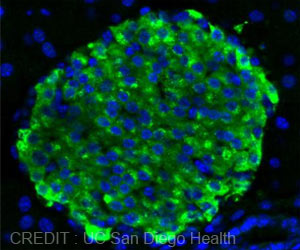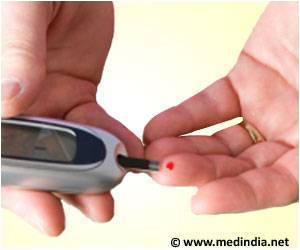Highlights:
- Insulinomas, benign tumors that secrete insulin can be used as models to study how beta cells of the pancreas secrete insulin and the pathways involved
- This information would be useful in the development of drug treatments for diabetes (caused by deficiency of beta cells), that could cause growth and regeneration of human beta cells
Analyzing Insulinomas – Identifying Pathways That Stimulate Beta Cell Proliferation
The research team at the Mount Sinai team collected 38 human insulinomas, rare benign pancreatic tumors that over secrete insulin, and analyzed patterns of gene expression that could provide clues as to how beta cells multiplied.
"For the first time, we have a genomic recipe -- an actual wiring diagram in molecular terms that demonstrates how beta cells replicate," said Andrew Stewart, MD, Director of the Diabetes , Obesity, and Metabolism Institute at the Icahn School of Medicine and lead author of the study.
- Using huge amounts of data collected about human insulinomas, the team generated two molecular pictures, one representing insulinoma and the other a normal beta cell. Identifying and studying the critical differences between the two could hopefully give ways of causing beta cell mass expansion in diabetic patients.
The Harmine Pathway Of Beta Cell Regeneration – Dr Stewart’s Earlier Research
Dr Stewart, the lead author of the study studied the effect of harmine on beta cell expansion in a previous research in 2015. The findings were published in Nature Medicine and were as follows
- The drug harmine was found to stimulate growth and multiplication of adult human beta cells in culture, an achievement that had eluded other scientists until recently
- They also demonstrated that harmine therapy tripled the number of beta cells, resulting in better control of blood sugar in three groups of mice that were engineered to resemble human diabetes.
About Diabetes - In Brief
Diabetes is an endocrine and metabolic disorder characterized by high blood glucose levels. This occurs due to deficiency of the hormone insulin which is required to utilize glucose and maintain blood glucose levels within the normal range.Currently nearly 30 million people are living with diabetes in the US alone and 50-80 million people have prediabetes.
Therefore, developing treatments for diabetes that could increase beta cell mass is one of the major priorities in diabetes research, which has proven to be challenging thus far.
Conclusion
In conclusion, the study emphasizes the importance of understanding the mechanisms that regulate insulin secretion that would enable the development of new therapies for both type 1 as well as type 2 diabetes.Although harmine is recognized as one pathway to cause beta cell regeneration, several pathways may in fact occur that could be targeted.
"We are excited and gratified by these remarkable results, which reveal an extraordinary array of new and validated pathways for diabetes drug development," said Dennis S. Charney, MD, Anne and Joel Ehrenkranz Dean, Icahn School of Medicine at Mount Sinai. "In a very short time, we have made terrific progress, and it is really a credit to the remarkably diverse areas of strength in biomedical research at Mount Sinai. It is truly an exciting set of discoveries for the field of diabetes."
References:
- Harmine drug that restores beta cells seen as key diabetes treatment - (http://www.diabetes.co.uk/news/2015/Mar/harmine-drug-that-restores-beta-cells-seen-as-key-diabetes-treatment-91533665.html)
- Rare benign tumors hold the ’genetic recipe’ to combat diabetes - (https://www.eurekalert.org/emb_releases/2017-10/tmsh-rbt092817.php)
- Pancreatic Beta Cell Lines and their Applications in Diabetes Mellitus Research - (http://www.altex.ch/resources/altex_2010_2_105_113_Skelin2.pdf)
- About insulinoma - (http://www.cancerresearchuk.org/about-cancer/neuroendocrine-tumours-nets/insulinoma/about)
Source-Medindia
















